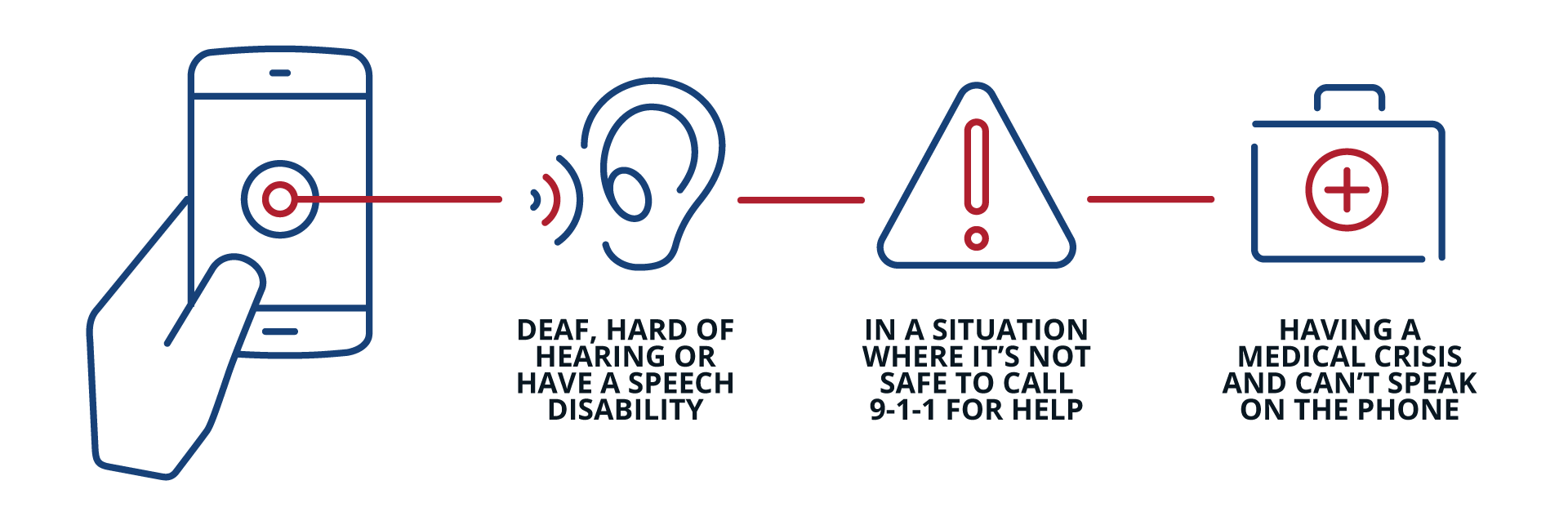Text-to-9-1-1
9-1-1: Call If You Can. Text If You Can't.
If you need help in an emergency but can’t speak or safely make a voice call, you can use your mobile phone to send a text message to 9-1-1. Now available statewide in South Dakota, Text-to-9-1-1 is a discreet way to report an emergency, stop a crime or save a life.
When to Text
Calling 9-1-1 is the best and fastest way to reach help, but sometimes it's not possible to do. Use Text-to-9-1-1 if you are:




